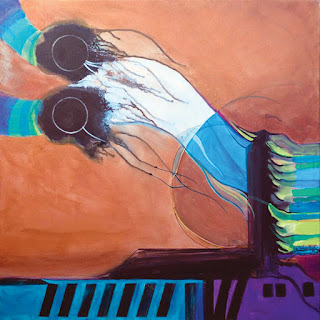“We gratefully thank You, for it is You, Adonai, Our G-d and G-d of our
forefathers for all eternity; Rock of our lives, Shield of our salvation are You
from generation to generation. We shall thank you and relate Your praise -
for our souls that are entrusted to You; for Your miracles that are with us daily;
and for Your wonders in every season - evening, morning and afternoon.
The Beneficent One, for Your compassions were never exhausted, and the Compassionate One, for your kindnesses never ended -
always have we put our hope in You.”
Modim is one of the last blessings of the Amidah in which we give thanks.
The Amidah serves as the cornerstone of every service.
It was written in the 5th century B.C.E. to serve as a basic prayer
covering praise, petitions and thanks. The word modim has many meanings.
We are grateful, we thank, we praise, we bow, we surrender, we acknowledge.
All of these inferences are made when this blessing is offered.
The artistic expression of this prayer represents G-d as the color red.
He is above us and below us, as our Protector and foundation.
The red sides show that giving thanks to G-d frames the Jewish way of life.
The center turquoise ball represents the word modim,
with arches emanating from it that allude to its many meanings.
The larger ball shows how our thanks magnify our relationship with G-d.
The arches heading downward reference bowing and surrendering.
The upward movements capture the gratitude, acknowledgement, praise
and gratefulness that we experience when we recite this prayer of thanks.
This image is available in it's original painting and a wide variety of fine art prints for gifts and collections. Many items are discounted for Clergy and those belonging to Jewish Organizations.








